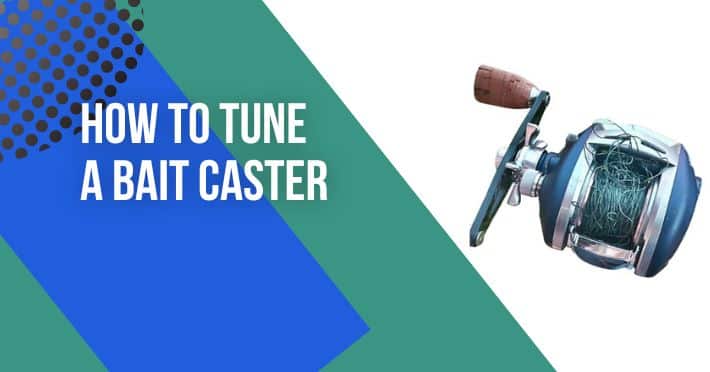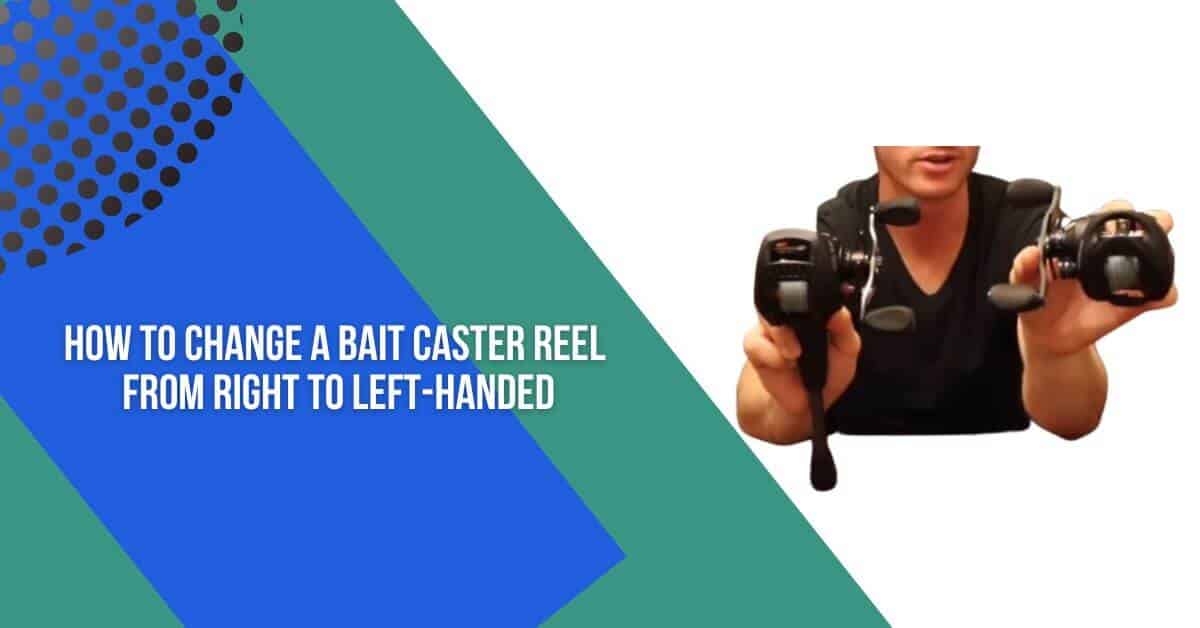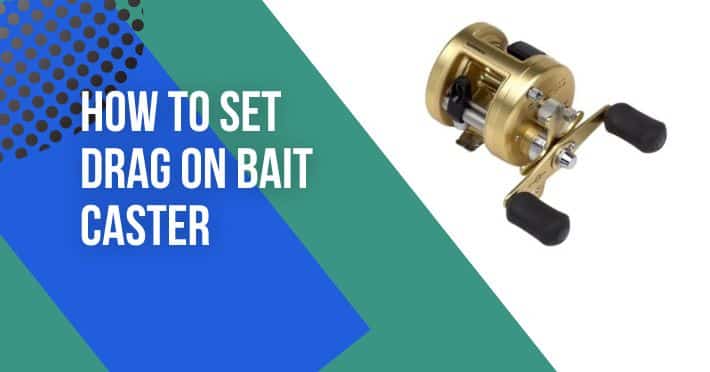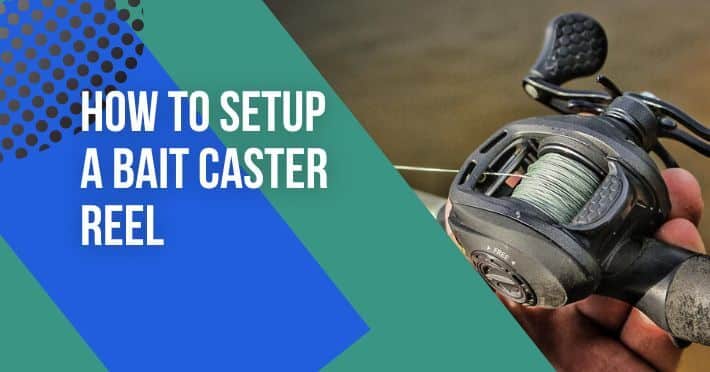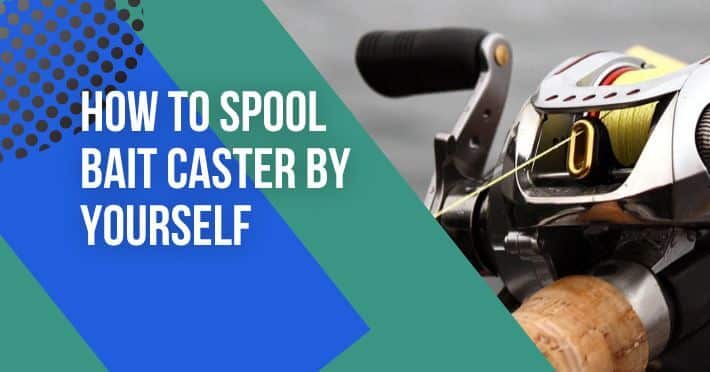Contents
- 1 Common Symptoms of Drag-Related Problems
- 2 Understanding the Drag System:
- 3 How the Drag System Works
- 4 Identifying Drag Issues:
- 5 Differentiating between Drag-Related Problems and Other Reel Issues
- 6 Troubleshooting and Fixing Drag Problems:
- 7 How Do I Fix The Drag On My Baitcaster
- 8 Conclusion:
- 9 FAQs!!
- 10 Q1: What are the common causes of drag-related issues on a baitcaster?
- 11 Q2: Can I fix the drag on my baitcaster myself, or should I seek professional help?
- 12 Q3: How often should I clean and maintain the drag system on my baitcaster?
- 13 Q4: How do I determine if the drag washers need to be replaced?
- 14 Q5: What lubricant should I use for the drag system?
- 15 Q6: My drag system still slips even after cleaning and maintenance. What could be the issue?
- 16 Q7: Can I adjust the drag while fighting a fish?
- 17 Q8: How do I know if the drag is set correctly?
- 18 Q9: Can I upgrade the drag system on my baitcaster?
- 19 Q10: What are some preventive measures to maintain a healthy drag system in the long run?
Achieving Smooth and Controlled Line Release: The drag system plays a crucial role in controlling the amount of resistance experienced by the fishing line during a fight with a fish. It allows you to smoothly release the line when the fish pulls hard, preventing line breakage and ensuring a successful catch. Let’s find out how do I fix the drag on my baitcaster.
Protecting the Fishing Line: A well-functioning drag system helps prevent sudden line snaps by absorbing the shock caused by aggressive fish movements, such as sudden runs or head shakes. This protection is vital for preserving the integrity and strength of your fishing line.
Landing Big Fish: When battling larger fish species, such as bass, musky, or saltwater game fish, a reliable drag system is essential for tiring out the fish while maintaining control. It ensures a balanced fight and increases your chances of successfully landing trophy-sized catches.
Common Symptoms of Drag-Related Problems
Inconsistent Drag Performance: If you notice erratic or uneven resistance when reeling in or releasing a line, it could indicate a drag system malfunction. The drag might slip or stick, compromising your ability to control the fish.
Drag System Lock-up: A drag system that becomes completely locked up or unresponsive poses a significant issue, making it difficult to reel in or release the line smoothly. This can lead to lost fish or equipment damage.
Drag System Noise: Unusual grinding, squeaking, or screeching sounds coming from the reel’s drag system may suggest the presence of debris, inadequate lubrication, or worn components. These noises should not be ignored and require attention to prevent further damage.
In the following sections, we will delve into the steps and techniques necessary to diagnose and fix drag-related issues in your baitcaster. By understanding the importance of a properly functioning drag system and recognizing common symptoms of drag problems, you can effectively address any drag-related issues and enjoy a more successful and enjoyable fishing experience.
Understanding the Drag System:
- Drag Washers: These are friction-inducing discs or washers that create resistance against the fishing line. They are typically made of materials like carbon fiber, felt, or metal. The drag washers are responsible for controlling the amount of tension applied to the line during a fish fight.
- Drag Knob/Tension Control: Located on the reel’s handle side, the drag knob or tension control allows anglers to adjust the amount of pressure exerted by the drag washers. Rotating the knob clockwise increases the drag tension, while turning it counterclockwise reduces it.
- Drag Stack: The drag stack refers to the arrangement of multiple drag washers in the drag system. It determines the overall strength and smoothness of the drag performance. Some reels feature a stack of washers on each side of the spool, while others may have them positioned on a single side.
- Drag System Housing: This is the compartment or casing that houses the drag washers and other components. It provides protection and support for the drag system.
How the Drag System Works
Friction-Based Resistance: The drag system relies on the principle of friction to create resistance against the fishing line. When a fish pulls on the line, the force is transferred to the drag washers, which rub against each other or against the spool, generating friction and resistance.
Adjustable Tension: By adjusting the drag knob or tension control, anglers can modify the pressure applied to the drag washers. Increasing the tension results in a tighter drag, making it harder for the fish to pull line while decreasing the tension allows for easier line release.
Heat Dissipation: During prolonged fights, the friction generated by the drag system can generate heat. The drag washers and drag system housing are designed to dissipate heat and prevent overheating, ensuring consistent drag performance even under intense pressure.
Smooth Operation: A well-maintained and properly functioning drag system should provide smooth and consistent resistance, allowing anglers to control the fish’s movements without sudden jerks or line breaks. Regular cleaning, lubrication, and drag washer inspections are essential for maintaining optimal performance.
By understanding the components and functionality of the drag system in your baitcaster, you will be better equipped to diagnose and address any issues that may arise. In the following sections, we will explore troubleshooting techniques and maintenance practices to help you fix drug-related problems effectively.
Identifying Drag Issues:
- Inconsistent Drag Performance: One of the primary indicators of a malfunctioning drag system is inconsistent resistance. If you experience sudden changes in drag tension while fighting a fish or notice variations in the amount of pressure needed to release line, it could indicate a problem with the drag system.
- Drag Slippage: If the drag slips when the fish pulls hard, causing the line to release more than intended, it suggests that the drag system is not holding its set tension properly. This can result in lost fish or equipment damage.
- Drag Stickiness: On the other hand, if the drag feels excessively sticky or does not release smoothly even when the fish is pulling, it may indicate a drag system that is overly tight or experiencing friction issues.
- Unusual Noises: Grinding, scraping, or squeaking sounds coming from the drag system during operation can be a sign of worn-out or improperly lubricated drag washers. These noises should not be ignored as they can worsen over time and lead to further damage.
Differentiating between Drag-Related Problems and Other Reel Issues
- Mechanical Reel Issues: Sometimes, reel malfunctions unrelated to the drag system can cause similar symptoms. For example, a loose or damaged spool, gear problems, or a faulty handle can also affect drag performance. Carefully inspecting the drag system and ruling out other potential mechanical issues will help identify whether the problem is drag-related or not.
- Line Issues: It’s important to distinguish between drag problems and issues related to the fishing line itself. Line twists, knots, tangles, or weak spots in the line can create the illusion of drag problems. Ensure that your line is properly spooled and in good condition before attributing any issues solely to the drag system.
- User Error: In some cases, perceived drag problems may be the result of incorrect drag settings or improper handling of the reel during a fish fight. Familiarize yourself with the proper operation and adjustment of the drag system to avoid misinterpreting user errors as drag-related issues.
By recognizing the signs of a malfunctioning drag system and differentiating drug-related problems from other reel issues, you can accurately diagnose the source of the problem. In the next section, we will explore troubleshooting techniques and solutions to help you fix drag-related issues on your baitcaster.
Troubleshooting and Fixing Drag Problems:
To address drag problems on your baitcaster, follow these steps for effective troubleshooting and solutions:
How Do I Fix The Drag On My Baitcaster
By following these troubleshooting and maintenance techniques, you can effectively address drag problems on your baitcaster. Remember to always refer to the reel’s user manual for specific instructions and recommendations provided by the manufacturer. In the next section, we will explore adjusting and fine-tuning the drag to optimize its performance.
a) Check for Debris or Dirt: Remove the side plate or access cover to examine the drag washers and other components. Clean out any dirt, debris, or old lubricant that may have accumulated, as these can affect the smooth operation of the drag system.
b) Examine the Drag Washers: Inspect the condition of the drag washers. Look for signs of wear, damage, or excessive flattening. If they appear worn or compressed, it may be necessary to replace them.
c) Assess the Drag Knob/Tension Control: Ensure that the drag knob is functioning properly and adjusting the drag tension smoothly. If it feels loose, stiff, or unresponsive, consider cleaning or lubricating the mechanism.
Conclusion:
A smooth and functional drag system is essential for a successful fishing experience. It provides controlled resistance against the fish’s movements, protecting your line from breaking and increasing your chances of landing your target species. A well-maintained drag system ensures that you can handle various fishing situations with confidence, whether you’re battling big fish or adjusting to changing environmental conditions.
- Regular Maintenance: Follow a regular maintenance routine for your baitcaster, including cleaning, lubricating, and inspecting the drag system. This will help prevent dirt buildup, reduce friction, and prolong the life of your reel’s components.
- Use Appropriate Lubricants: When lubricating your reel, make sure to use lubricants recommended by the manufacturer. Different parts of the reel may require specific types of lubrication, so consult the user manual for guidance.
- Avoid Over-tightening: While it’s important to set the drag appropriately, avoid over-tightening it, as this can put excessive strain on the components and potentially lead to damage. Find the right balance between line tension and the fish’s fighting ability.
- Store Properly: When not in use, store your baitcaster in a dry and protected environment to prevent corrosion and damage to the drag system. Use reel covers or cases for added protection during transportation and storage.
- Seek Professional Help When Needed: If you encounter persistent drag issues or are unsure about performing repairs or maintenance, don’t hesitate to seek professional assistance from a reel repair expert. They have the knowledge and experience to diagnose and resolve complex drag system problems.
By understanding the importance of a smooth and functional drag system and following proper maintenance practices, you can maximize the performance and longevity of your baitcaster. A well-maintained drag system will enhance your fishing experience, allowing you to enjoy successful catches and memorable moments on the water.
FAQs!!
Drag-related issues on a baitcaster can be caused by factors such as dirt or debris accumulation, worn-out drag washers, inadequate lubrication, incorrect drag settings, or mechanical problems within the reel.
Q2: Can I fix the drag on my baitcaster myself, or should I seek professional help?
Many drag-related issues can be resolved by anglers themselves through proper cleaning, lubrication, and adjustment techniques. However, if you are unsure or encounter complex problems, seeking professional assistance from a reel repair expert is recommended.
Q3: How often should I clean and maintain the drag system on my baitcaster?
Regular maintenance is essential for optimal drag system performance. It is recommended to clean and lubricate the drag system at least once or twice a year, or more frequently if you fish in harsh conditions or notice performance issues.
Q4: How do I determine if the drag washers need to be replaced?
Inspect the drag washers for signs of wear, damage, or excessive flattening. If they appear worn or compressed, it may be necessary to replace them. Consult the reel’s user manual or contact the manufacturer for the appropriate replacement parts.
Q5: What lubricant should I use for the drag system?
Use reel lubricants or greases specifically recommended by the manufacturer for your baitcaster. Different parts of the reel may require different types of lubrication, so refer to the user manual or seek manufacturer guidance.
Q6: My drag system still slips even after cleaning and maintenance. What could be the issue?
If your drag system continues to slip after maintenance, it may indicate worn-out drag washers that need to be replaced. Alternatively, there may be other mechanical problems within the reel that require professional attention.
Q7: Can I adjust the drag while fighting a fish?
It is not advisable to adjust the drag while actively fighting a fish, as it can lead to line breakage or lost fish. Set the drag appropriately before starting your fishing session and make minor adjustments during breaks or lulls in the fight if necessary.
Q8: How do I know if the drag is set correctly?
The drag should be set to provide enough resistance to tire out the fish while allowing it to make runs. A properly set drag should release line smoothly when the fish pulls hard, without excessive slippage or sticking.
Q9: Can I upgrade the drag system on my baitcaster?
Yes, upgrading the drag system is possible in some baitcasters. Consult the manufacturer or reel experts to explore options for higher-quality drag washers or performance-enhancing upgrades suitable for your specific reel model.
Q10: What are some preventive measures to maintain a healthy drag system in the long run?
Regular cleaning, proper lubrication, avoiding over-tightening, and storing the baitcaster in a dry and protected environment are essential preventive measures to maintain a healthy drag system and prolong its lifespan.


